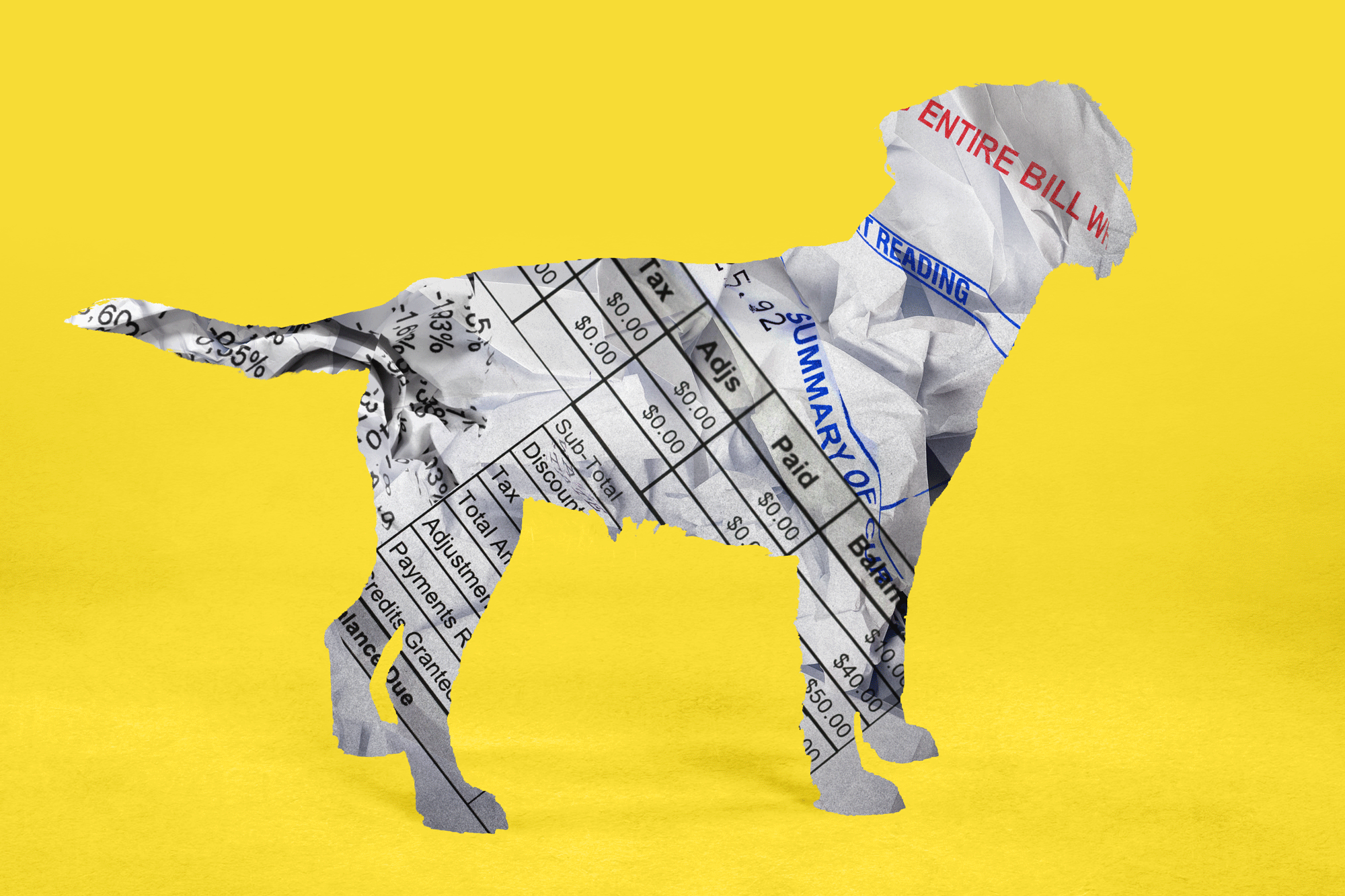THE GOODS : The Pet Policy : As Care Costs Rise, Owners Have One More Option--Insurance
- Share via
Soon after Robin Leonard adopted a 3-year-old Welsh terrier last summer, the dog began experiencing severe gastrointestinal problems. Numerous vet visits, special diets and medications later, Moka now faces an intestinal tract biopsy.
“We love her dearly and we’ll spend what it takes,” says Leonard. “But we were astounded when we figured out that the little creature has been costing us $150 to $200 a month.”
Leonard is among the 100 million Americans who are finding pet ownership a costly investment. It’s estimated that $5 billion each year is spent on health care for pets.
There have been major changes in the sophistication and cost of veterinary medical and surgical services. Procedures once reserved for humans, such as ultrasound, chemotherapy and blood transfusions, are becoming increasingly available in the care of pets. Along with these advancements have come specialists, including veterinary neurologists, cardiologists, surgeons, ophthalmologists, dermatologists and dentists.
As a result, vet bills of $1,000 or more are becoming commonplace. Some devoted owners have resorted to second mortgages and credit card debt to pay for veterinary bills that can run into the tens of thousands of dollars for complicated cases--making pet health insurance an increasingly attractive option.
But while medical coverage for cats and dogs is generally recommended by veterinarians, selecting a policy can be as complicated as choosing a plan for humans. Pet insurance covers accidents and non-hereditary illnesses. But pre-existing conditions, congenital health problems like hip dysplasia and such basics as physicals, vaccinations and neutering, are not covered. And premiums can vary with an animal’s age, breed and size.
“The good thing about pet insurance is that it can prevent owners from being faced with having to put their animal to sleep because they don’t have the money,” says Mary Randolph, author of “Dog Law” (Nolo Press, 1994). “But there are a lot of restrictions, such as hereditary and congenital conditions. A lot of problems can get shoehorned into those categories.”
Only one firm, Anaheim-based Veterinary Pet Insurance, survives in California. Fireman’s Fund Medipet stopped selling pet health insurance in April, 1994, but continues to honor current policies through their expiration. Founded in 1980 by a group of veterinarians, VPI offers five plans. The major medical plan comes with a deductible of $20 for each illness or accident and pays up to $1,000 per incident and a maximum of $5,000 per year. Coverage includes office visits, injections, prescriptions, treatments, lab fees, X-rays, surgery and hospitalization--all subject to policy terms.
Policies range from a low of about $59 a year to $159 or more for an older dog or cat, with the annual average at $90. VPI may cover pre-existing conditions such as ear and bladder infections provided the previous bout is considered cured and hasn’t required treatment for six months.
Many of VPI’s customers are experienced pet owners who have been hit with huge bills after their animals’ illnesses or accidents.
“We have people write to us saying that they couldn’t afford medical insurance for themselves, but they wouldn’t go without it for their pets,” said Rebecca Lewis, VPI’s vice president of marketing. “Their pets are like their children. They want the best possible treatment when the need arises.”
Despite increasing costs for veterinary care, pet insurance has yet to catch on with owners, and awareness of the service remains fairly low. And because owners have the option of euthanasia for their ailing pets, the threat is not seen as economically devastating as it is in the case of human illness.
“In the last 10 years, it’s become fairly routine to treat pets with cancer, perform complete hip replacement, transplant kidneys and install pacemakers,” says Dick Schumacher, veterinarian and executive director of the California Veterinary Medical Assn.
“But in some people’s minds, health care for pets is a discretionary item. It’s the people who have a very close human-animal bond that tend to lean more toward insurance.”
Veterinary clinics around the country have started to offer wellness plans--kind of pet HMOs--promoting preventive health care. The concept will get a big boost this summer when VetSmart Pet Hospital and Health Center introduces the Optimum Wellness Plan in 36 Petsmart stores throughout California, Washington, Oregon and Illinois. Southern California locations include Brea, Chino, Covina, Fountain Valley, Foothill Ranch, Palm Desert, Rancho Cucamonga, Signal Hill and Yorba Linda.
Pet owners pay a one-time membership fee, from $99 to $199, followed by monthly payments that range from $10 to $40 per month. Under the lowest-cost plan, pets receive vaccinations, two physical exams per year, heartworm checks, feline leukemia tests and fecal exams. The next plan up covers surgical fees for sterilization, de-worming, and blood and thyroid tests. Under the more expensive plans, higher-priced services such as dentistry, chest X-rays and electrocardiograms are provided. There is no charge or limit to the number of office visits.
The creator of the new wellness plan is Dr. Scott D. Campbell, VetSmart’s CEO and Oregon veterinarian. He has modeled his clinics after the Banfield Pet Hospital and Health Center in Portland, Ore.
“In the United States today, pets don’t come close to maximizing their quality or length of life. In fact, the average dog lives to be less than 8 years old,” says Campbell. “The reason for this is that on average, pets receive less than one-fourth of the preventive care they need due to a combination of the high cost of veterinary care, inconvenience of pet health care and lack of education on the part of owners.”
The veterinary industry is watching VetSmart’s program closely. Some caution that wellness plans in general distract veterinarians from their main focus of medicine.
“The risk is that you can wind up selling product rather than treating the dog or cat,” says James Davis, a West Virginia veterinarian and past chairman of the American Veterinary Medical Assn.’s pet-health-insurance committee.
Those considering health insurance may want to talk to their veterinarians and other pet owners. Dogs and cats have specific problems associated with the various stages of their lives. Puppies and kittens are vulnerable to infectious diseases; middle-aged dogs and cats are prone to accidents, and older pets face a variety of illnesses, from cataracts to diabetes.
“Like any insurance program, it’s best to invest when the pet is young and healthy,” advises Schumacher, of the California Veterinary Medical Assn. “At that time, the cost is less, and, obviously, once a problem is diagnosed it is too late for it to be covered.”
More to Read
Sign up for Essential California
The most important California stories and recommendations in your inbox every morning.
You may occasionally receive promotional content from the Los Angeles Times.










